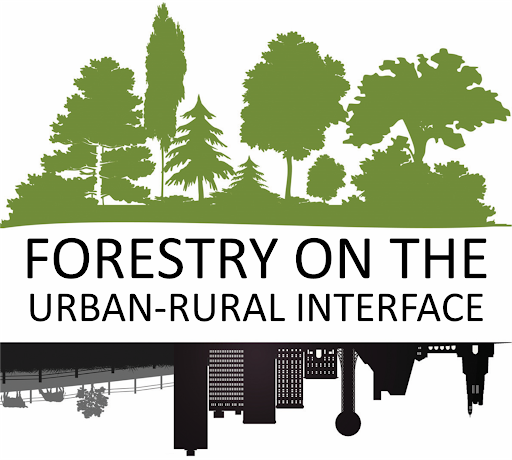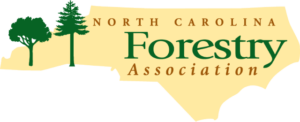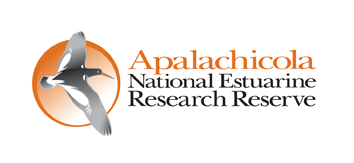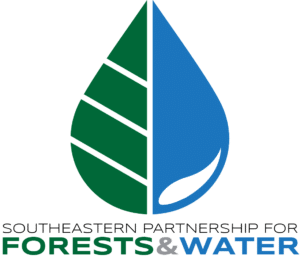The aftermath of Hurricane Michael left landowners and managers in Florida, Georgia, and Alabama scrambling in pursuit of an opportunity to salvage what was left of their investment. While all segments of the industry worked as close to full capacity as possible, the combined effort is estimated to have salvaged only 10-15% of the compromised material. As the dust settled following the salvage period, the battered forests of the region were dealt another blow in the form of an unseasonably hot and dry May that further stressed timber stands. The broken, leaning, scarred, and windblown trees were quickly infested with bark beetles, and, with a factory of sorts in which to reproduce, the beetles soon moved to adjacent, otherwise healthy trees suffering from a lack of rain.
The two most economically impactful beetle species in the US south are the Southern Pine Beetle (SPB) and the Ips engraver beetle (IPS). SPB outbreaks are rare and occur most often in unmanaged, overstocked stands and generally require harvesting to salvage whatever can be utilized before the beetles eradicate entire timber stands. Attacks from IPS beetles are more sporadic and may affect a handful of trees or portions of stands of timber. Rather than targeting overstocked stands, IPS beetles focus on specific individuals suffering from injuries like lightning strikes, windthrow, and root disturbance. The scattered leaning, broken, and otherwise compromised trees resulting from hurricane damage plays right into the hands of the IPS beetle. Across all age classes, all species of pines, and all regions within the path of Hurricane Michael, IPS beetle activity has increased.
Southern Forestry Consultants, Inc. (SFC) has been monitoring beetle activity continuously and while activity slowed with the onset of consistent summer rainfall, activity has increased recently with drier weather. Earlier in the year IPS beetles were found in downed trees, but they had not successfully attacked living, healthy trees. In the past few weeks IPS beetles have begun to attack trees that, at least from an outward appearance, do not appear to have been damaged by the storm. We encourage you to be vigilant in watching for yellowing or reddening needles in isolated trees or groups of trees. Additionally, our monitoring efforts from the air and ground will continue.
IPS beetles have successfully attacked 16 species of pine in the US including loblolly, slash, and longleaf pine. Under normal circumstances IPS beetles are unable to successfully attack most healthy trees as the sap in the vascular system of the tree is able to expel or trap the attacking beetle. However, during periods of drought, reduced sap flowing in the tree as a result of less available groundwater inhibits the tree’s ability to resist attacks. Furthermore, an abundance of dying material following disasters like Hurricane Michael provide ideal breeding grounds for the IPS beetle to reproduce and multiply. Our monitoring efforts have supported the idea that hurricane-stressed trees of all age classes, including timber stands as young as three years old, have suffered damages leading to IPS beetles infestations.
Most control options for IPS beetles require the application of pesticides, but even the available products produce minimal effectiveness due to the difficulty in obtaining adequate coverage. This challenge, coupled with the cost of treatment, really preclude pesticide applications from consideration as a logical option, except in isolated cases. The best way to minimize risk for a given stand of timber is to prevent disturbance of all kinds. As we enter the fall season when many people enjoy recreational activities on properties, be diligent in avoiding disturbance to timber stands. Injuries from mowing, harrowing, tree stand attachments, and more can all lead to stressful conditions that could be the impetus for an infestation.
At this time, we are asking everyone to keep a close eye on their timber. It is perfectly normal to lose an isolated tree during any given year and secondary beetle infestations are common once a tree begins to die. However, if you see a group of trees in close proximity begin to decline or die, this could be a primary beetle infestation which will require closer observation. Yellowing needles, pitch tubes, and reddish-brown sawdust between bark plates are all indications of active beetles. Please stay vigilant in your observations throughout the summer and fall as the peak beetle populations often coincide with seasonally dry conditions during this time. If you have concerns about an infestation, alert your SFC forester to discuss an evaluation and options.
 The 2019 Tennessee Forestry Association (TFA) Annual Meeting was held this week in Knoxville, Tennessee. TFA and the Tennessee Tree Farm Program asked Austin Carroll to speak on behalf of Southern Forestry Consultants (SFC) and Wiregrass Ecological Associates (WEA) regarding ongoing landscape management planning efforts in the Southeast and implications for the upcoming Tennessee plan. Mr. Carroll, a Registered Forester who led the development of the initial American Tree Farm System (ATFS) Landscape Management Plan (LMP), has led the creation of state-wide LMPs in Arkansas, Louisiana, South Carolina, and Florida. SFC and WEA will continue to lead the creation of these plans during 2020 in Tennessee, Georgia, and Virginia.
The 2019 Tennessee Forestry Association (TFA) Annual Meeting was held this week in Knoxville, Tennessee. TFA and the Tennessee Tree Farm Program asked Austin Carroll to speak on behalf of Southern Forestry Consultants (SFC) and Wiregrass Ecological Associates (WEA) regarding ongoing landscape management planning efforts in the Southeast and implications for the upcoming Tennessee plan. Mr. Carroll, a Registered Forester who led the development of the initial American Tree Farm System (ATFS) Landscape Management Plan (LMP), has led the creation of state-wide LMPs in Arkansas, Louisiana, South Carolina, and Florida. SFC and WEA will continue to lead the creation of these plans during 2020 in Tennessee, Georgia, and Virginia. TFA is a private, non-profit organization primarily funded through membership dues. It began more than 50 years ago under the name of “Keep Tennessee Green” and was organized to assist in reducing the tremendous toll taken by forest fires each year throughout the state. TFA continues to work with state and national government agencies to promote a better understanding and appreciation of the forests of Tennessee through a diversity of public relations, government, and educational programs.
TFA is a private, non-profit organization primarily funded through membership dues. It began more than 50 years ago under the name of “Keep Tennessee Green” and was organized to assist in reducing the tremendous toll taken by forest fires each year throughout the state. TFA continues to work with state and national government agencies to promote a better understanding and appreciation of the forests of Tennessee through a diversity of public relations, government, and educational programs.
 Apalachicola National Estuarine Research Reserve Nature Center in Eastpoint, Florida. Mr. Carroll spoke on the creation of the Emerald Coast Utilities Authority (ECUA) Central Water Reclamation Facility (CWRF) Forest Restoration Area. ECUA’s goal for the CWRF Forest Restoration area is to develop a sustainable, native forest ecosystem capable of maximizing groundwater recharge capabilities. ECUA has worked with SFC and WEA since 2016 to convert the former International Paper lands surrounding the CWRF, from cutover and unmanaged plantations towards Desired Future Conditions (DFCs) of sandhill pine, pine flatwoods, and mixed forested wetland communities. Restoration and enhancement activities have included exotic and invasive species control, mechanical and herbicide treatments, harvesting operations, longleaf pine and wiregrass planting, and the return of prescribed fire to these ecosystems. These practices, the ongoing management, and the long-term management plan developed by SFC and WEA are guided by current research results regarding managing forests for increased regional water availability (including the results of fellow speaker Dr. Matt Cohen, University of Florida). Also in attendance to answer questions regarding the project was Don Palmer, PE, Deputy Executive Director of Engineering and Environmental Services at ECUA. Mr. Carroll is Registered Forester and Certified Wildlife Biologist who serves as the SFC and WEA program manager for this restoration effort.
Apalachicola National Estuarine Research Reserve Nature Center in Eastpoint, Florida. Mr. Carroll spoke on the creation of the Emerald Coast Utilities Authority (ECUA) Central Water Reclamation Facility (CWRF) Forest Restoration Area. ECUA’s goal for the CWRF Forest Restoration area is to develop a sustainable, native forest ecosystem capable of maximizing groundwater recharge capabilities. ECUA has worked with SFC and WEA since 2016 to convert the former International Paper lands surrounding the CWRF, from cutover and unmanaged plantations towards Desired Future Conditions (DFCs) of sandhill pine, pine flatwoods, and mixed forested wetland communities. Restoration and enhancement activities have included exotic and invasive species control, mechanical and herbicide treatments, harvesting operations, longleaf pine and wiregrass planting, and the return of prescribed fire to these ecosystems. These practices, the ongoing management, and the long-term management plan developed by SFC and WEA are guided by current research results regarding managing forests for increased regional water availability (including the results of fellow speaker Dr. Matt Cohen, University of Florida). Also in attendance to answer questions regarding the project was Don Palmer, PE, Deputy Executive Director of Engineering and Environmental Services at ECUA. Mr. Carroll is Registered Forester and Certified Wildlife Biologist who serves as the SFC and WEA program manager for this restoration effort. Panhandle Forest and Drinking Water Workshop is presented by the
Panhandle Forest and Drinking Water Workshop is presented by the